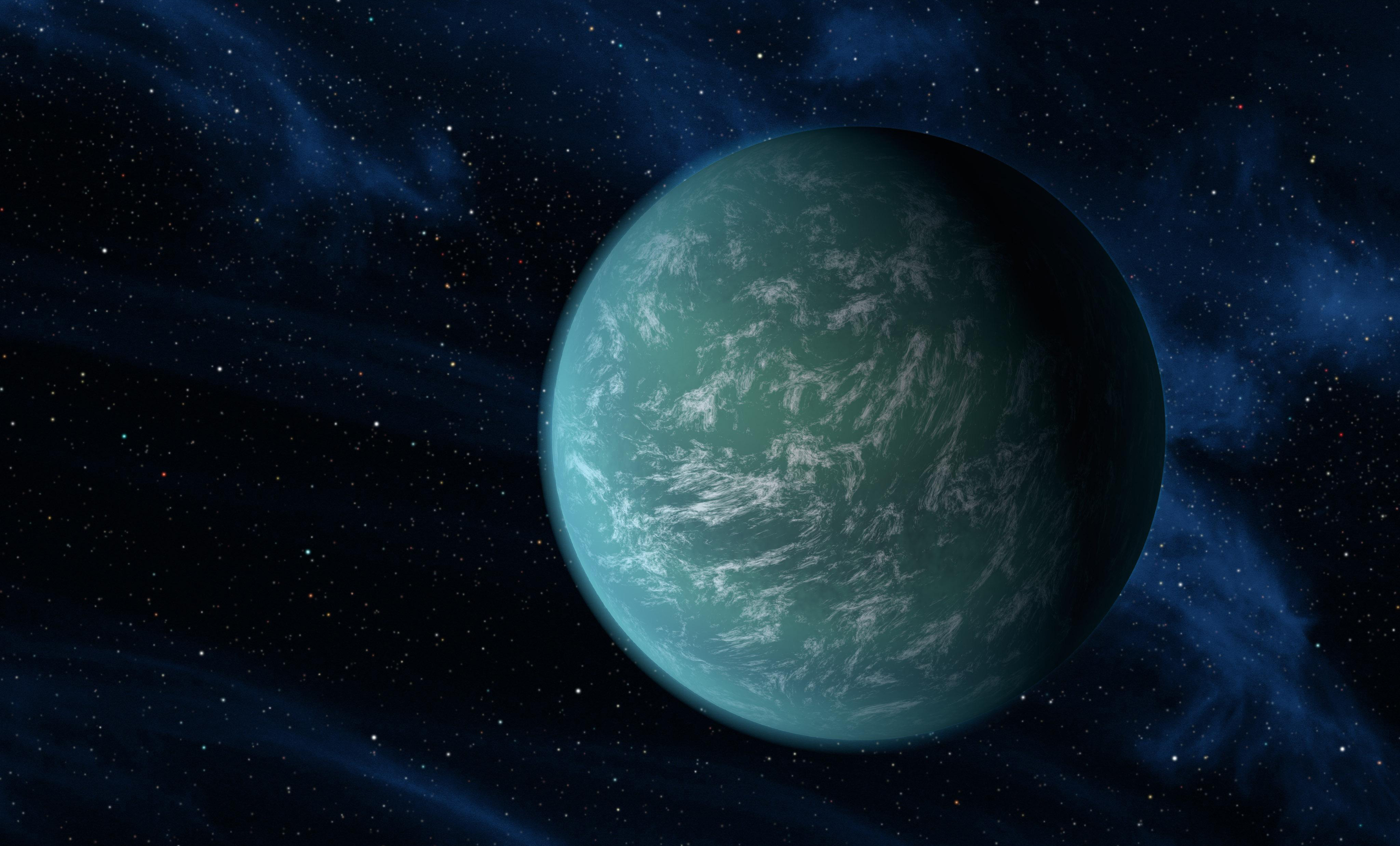-
Was Life on the Early Earth Purple?
October 25, 2018 / Written by: Keith Cooper
Habitable exoplanets where life uses the purple-pigmented compound retinal to provide metabolic energy from sunlight could provide a remote biosignature when viewed spectroscopically. Image credit: NASA/Ames/JPL–Caltech.Early life-forms on Earth may have been able to generate metabolic energy from sunlight using a purple-pigmented molecule called retinal that possibly predates the evolution of chlorophyll and photosynthesis. If retinal has evolved on other worlds, it could create a a distinctive biosignature as it absorbs green light in the same way that vegetation on Earth absorbs red and blue light.
Earth’s atmosphere has not always contained significant amounts of oxygen. For the first two billion years of our planet’s history, the atmosphere was rich in carbon dioxide and methane, but around 2.4 billion years ago something changed: the Great Oxygenation Event that saw the abundance of free oxygen in our atmosphere dramatically rise. The cause of this is thought to be cyanobacteria, which are able to perform photosynthesis – the transformation of sunlight and carbon dioxide into metabolic energy to produce sugars that fuel life’s processes, and oxygen as a ‘waste’ product – using a green pigment called chlorophyll.
Read the full story at Astrobiology Magazine.
Source: [Astrobiology Magazine (astrobio.net)]
- The NASA Astrobiology Institute Concludes Its 20-year Tenure
- Global Geomorphologic Map of Titan
- Molecular Cousins Discovered on Titan
- Interdisciplinary Consortia for Astrobiology Research (ICAR)
- The NASA Astrobiology Science Forum Talks Now on YouTube
- The NASA Astrobiology Science Forum: The Origin, Evolution, Distribution and Future of Astrobiology
- Alternative Earths
- Drilling for Rock-Powered Life
- Imagining a Living Universe
- Workshops Without Walls: Astrovirology